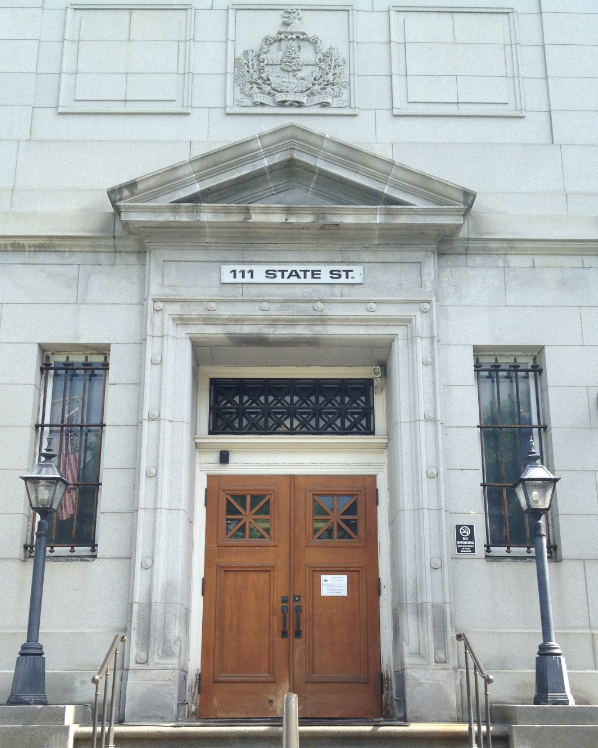Berkshire Bank v. Kelly, 2023 VT 2
WAPLES, J. Plaintiff Berkshire Bank filed this action
seeking possession of funds in an investment account owned by defendant Thomas
Kelly, which defendant purportedly pledged as security for a business loan to
his sister Dorothea Kelly. The civil division granted summary judgment in
favor of defendant, concluding that plaintiff did not have a valid security
interest in the account. We agree and affirm.
The trial court ruled a a security interest never attached under 9A V.S.A. § 9-203(b) and granted defendant's motion for summary judgment because plaintiff never possessed or controlled the Merrill Lynch account as required by the language of the pledge agreement.
Article 9 provides that a creditor has a secured interest in
collateral when the interest attaches, meaning "when it becomes
enforceable against the debtor with respect to the collateral." 9A V.S.A.
§ 9-203(a). In turn, a security interest becomes enforceable against the debtor
when one of four specified evidentiary conditions is satisfied. Id. § 9-203(b)
The parties agree that prior to the commencement of this
litigation the Merrill Lynch account was never in plaintiff's possession or
control, ruling out three of the methods of satisfying the evidentiary
requirement. See 9A V.S.A. § 9-203(b)(3)(B)-(D) (providing for possession,
delivery, or control pursuant to security agreement as alternative evidentiary
tests of enforceability).
Accordingly, the security interest only attached if the
evidentiary condition set forth in § 9-203(b)(3)(A) was met; that is, if
defendant "authenticated a security agreement that provides a description
of the collateral.".
Here, the agreement between the parties defined the
collateral as "all of [defendant's] property . . . in the possession of,
or subject to the control of, [plaintiff] . . . whether existing now or later
and whether tangible or intangible in character, including" defendant's
Merrill Lynch account.
On appeal, plaintiff argues that the security agreement describes the collateral as the Merrill Lynch account, and that the possession-or-control language is not a precondition to the creation of the security interest.
The language of the clause does not support plaintiff's
interpretation, since it refers to the account already being in plaintiff's control.
Under the plain meaning of this language, collateralization was dependent on
transfer of possession or control of the Merrill Lynch account to plaintiff.
Because that event never occurred, the security interest never attached.
Plaintiff argues "a security agreement may create
or provide for a security interest in after-acquired collateral." 9A
V.S.A. § 9-204(a), and that the pledge agreement described the collateral as
property within plaintiff's possession or control "whether existing now or
later." We are not persuaded by
this argument. The account never met the description of the collateral because
plaintiff never took control of it as the agreement contemplated. Section 9-204
applies to property in which the debtor does not have any rights at the time
the security agreement is executed. The rule on after-acquired property does
not assist plaintiff.
Finally, plaintiff argues that its security interest eventually did attach when defendant complied with the court's order directing him to set aside $208,000 "as security for the asserted debt in this matter" by placing that amount in escrow with his attorney, claiming that plaintiff took possession of the collateral under 9A V.S.A. § 9-313(c)(1) at that point. We disagree.
Section
9-313(c)(1) provides that a secured party takes possession of collateral held
by a person other than the debtor when "the person in possession
authenticates a record acknowledging that it holds possession of the collateral
for the secured party's benefit." Id. cmt. 3. However, "a court may
determine that a person in possession is so closely connected to or controlled
by the debtor that the debtor has retained effective possession, even though
the person may have agreed to take possession on behalf of the secured party."
Id.
We conclude that such is the case here. We see nothing in
the record indicating that defendant's counsel was acting as an agent of
plaintiff. Under these circumstances, we conclude that plaintiff did not take
possession of the collateral when the funds were placed in escrow by court
order.
Because defendant's
Merrill Lynch account was never within plaintiff's control, it did not fall
within the description of collateral contained in the parties' pledge
agreement, and no security interest ever attached to the account. The
civil division therefore correctly granted summary judgment in favor of
defendant.
